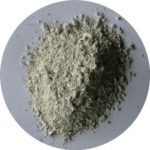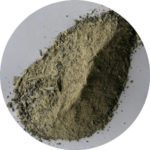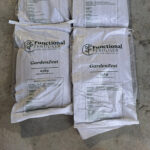There is a surprisingly large group of mostly young farm owners and operators that believe that if nitrogen is not supplied regularly in manufactured form there will be a deficiency which will limit growth.
They site the evidence of not applying nitrogen to one paddock or area of the farm and growth in that area almost immediately slows.
It is an accurate observation and reinforces the fact that if anything is removed from an existing programme and not replaced growth will slow, and that applies to all commonly applied nutrients.
There are farmers that have never embraced the philosophy that nitrogen must be applied regularly and when their properties have an abundance of pasture throughout the year the most frequent dismissal is that they are understocked.
When stocking rate is measured in animal numbers that will often be the case however if stocking rate is measured in animal weight along with kilograms of milk solids, meat and wool produced, their stock units carried is often well above district average.
Where then does the nitrogen required for outstanding production come from? Primarily from two sources, soil microbes that fix nitrogen direct from the atmosphere, however most of it is fixed free of charge by clover.
78% of what we breathe is nitrogen so there is no shortage of this essential gas, it’s how to make it available for plant growth that is the issue.
Permanent grazed pastures were developed in this country with a mix of typically 3 clovers, two whites and one red, along with grasses that included rye, cocksfoot and prairie.
A photo of pasture in Grasslands of New Zealand by Sir E. Bruce Levy in 1970, has the following, “good clovers are essential to exploit phosphate, lime, and other mineral fertilisers and to ensure nitrogen-getting for the grasses of the sward”.
Annual pasture production was measured at between 14,000 – 15,000lb of dry matter per acre, the equivalent of 15,900kg and 17,000kg dry matter per hectare today.
There are few pastures today that produce anywhere close to that amount of dry matter, perhaps the key reason for farms having to increase in size to remain profitable.
Functional Fertiliser makes two products, CalciZest based on lime and DoloZest using Golden Bay Dolomite. They both contain a wide range of proprietary fungi and bacteria cultured onto soft carbons.
The use of beneficial microbes is to facilitate the uptake of nutrient by plants as it is only through the activity of biology that nutrient can enter plants.
The other important reason for the inclusion of microbes is to speed the rate at which nutrient is cycled i.e., nutrient taken up by roots is replaced.
This speed of cycling is particularly important for nitrogen availability. There is typically 5,000 – 15,000kg of nitrogen per hectare within reach of plant roots. It has accumulated naturally along with carbon and only a small fraction of that is necessary for annual pasture production of 18,000kg of dry matter per hectare and above.
Clover growing over the summer and early autumn can fix considerably more nitrogen than required for growth allowing for the further accumulation of soil carbon.
Clover flourishes when it’s too hot for grasses, typically from late November through to mid-March, the reason for clover to be an essential part of pasture mixes.
One of the ways to maximise the growth of long stemmed large-leafed clover is by increasing the amount of readily available calcium.
Both CalciZest and DoloZest contribute to the calcium rich environment necessary for strong pest free growth, and for optimum mid-season performance are best applied in spring.
For more information call Peter on 0800 843 809.




